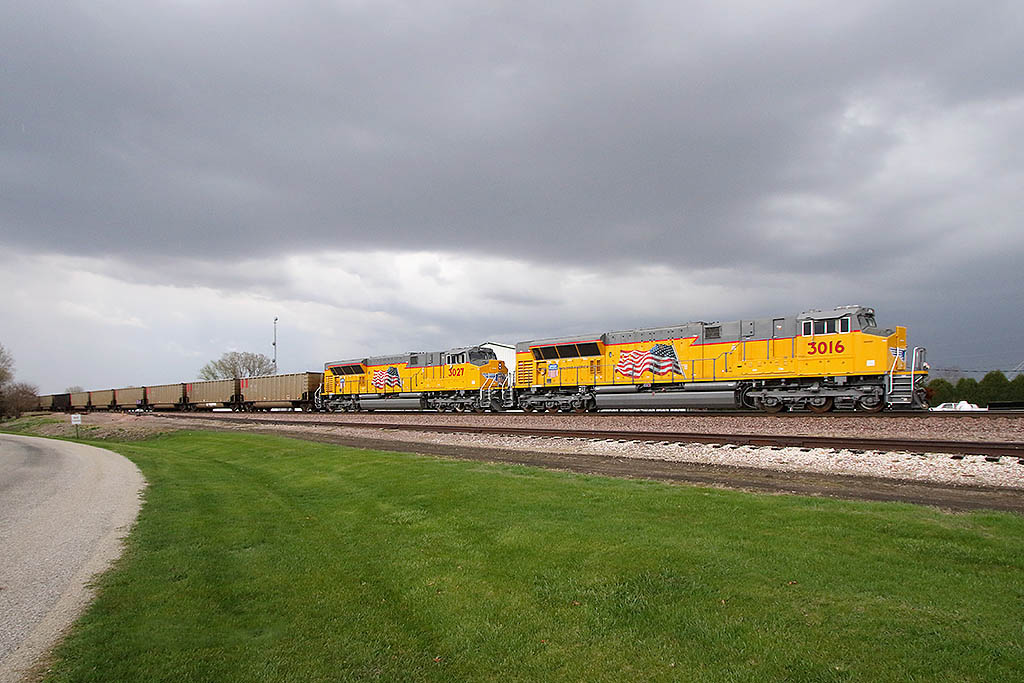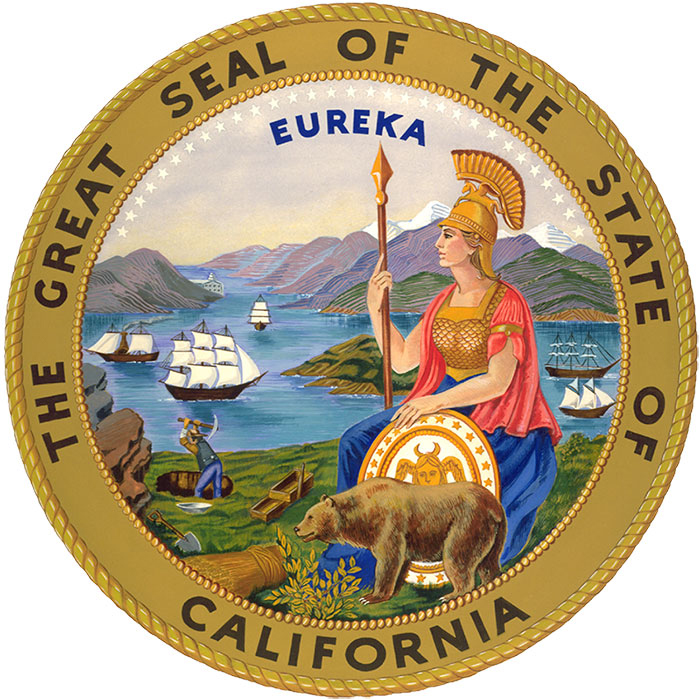The rejected locomotives were routed to either Progress Rail’s Muncie, Ind., plant or Union Pacific’s Proviso Yard for storage until the issues were resolved, while Nos. 3012 and 3014 were stored on Union Pacific in California temporarily.
During the next several months, Progress Rail and Union Pacific used Nos. 3012 and 3014 to work out the bugs on the new locomotives, with both testing in various assignments and locations on the west end of Union Pacific’s system.
Last month, with issues close to being resolved, the parked SD70ACe-T4s at Proviso began shipping to Progress in Muncie for modifications prior to being placed in service by Union Pacific.
The first eight arrived back at Proviso from Muncie on April 5, ready to be placed in service. Road numbers for the eight were UP Nos. 3015, 3016, 3019, 3020, 3022, 3023, 3025, and 3027. Union Pacific assigned Nos. 3016, 3019 and 3027 to coal empty CWKBT9-14 on April 14, to take the train west for loading in the Powder River Basin.
All new SD70ACe-T4s with the exception of Nos. 3012 and 3014 are being assigned to coal service as they are placed in service.















First, I am no tree hugger, but nitrous oxide precipitates as nitric acid (i.e., acid rain) and is very bad for our lakes and rivers, as well as paint finishes on cars, etc. so tier 4, while a pain, is a good thing. The extra things required, while they add expense, have not proven unreliable in the on road trucking and off road equipment industries where they have been for several years. And contrary to what was feared, they have resulted in much improved fuel (or fluid with DEF) efficiency. Finally, cry no tears for Progressive/EMD…they made a bad bet and didn’t prepare for tier 4, so its their own fault (as well as their corporate parents Caterpillar) they weren’t ready on time. Everyone else, GE and many other engine suppliers, did just fine.
To be fair, EMD hasn’t had the testing time GE has, and a whole new engine and system is bound to have one or two teething troubles. Hopefully this will the last we hear of it and they will perform to EMD’s standards. Can’t wait to see them trackside!
Oh, how the mighty have fallen! EMD in heyday would have never had a locomotive rejected for problems. No one may like GE but they make locomotives that work.
I’ve actually been a crew member on the uprr 3012 on the lrj92 local in northern California. This locomotive was incredibly QUITE with a better ride than previous SD 70s. The prime mover sounds more like a GE C45 Than emds of the past. Thats the only negative thing I have to say about the unit. Good job progressive rail.
Would it not make sense to enlighten us as to the cause of the units not being accepted by Union Pacific?
Getting NOx down in a diesel is some trick because at the temp and pressure of combustion in a diesel, atmospheric nitrogen oxidizes. The tricks you have to pull to keep the pressure and temp just under where nitrogen oxidizes reduces power, decreases fuel economy and adds all sorts of gizmos that just add complexity and reliability concerns.
DEF just “unburns” the nitrogen in the exhaust stream. No messing with the basics of the diesel.
The railroads didn’t want the headache of making DEF available everywhere they fuel, so the just told EMD and GE “you figure it out” and that was it.
I’m pretty sure all is not exactly wonderful with the T4 GEs, although EMD has a much harder job because they are basically starting from scratch with their 4 cycle engine.
It would be interesting to know what the “problems” were with the UP order that caused UP to stop operating and hold the deliveries. Has to be really bad for that to occur.
I still do not understand why railroads did not go for DEF. In trucking DEF uses considerably less fuel. In addition to simpler systems.
Paul B, Don O…GE didn’t seem to have any issues with their T4, so the problem lies squarely with Progress Rail/EMD, and don’t blame the tech…we’re a technology exporting country, there should be no shortage of minds capable of finding a simple solution.
I’m with Paul B. Without DEF, it’s just too much. If I were CMO on a RR, I’d avoid T4 locomotives like the plague.
T4 is complex tech, and while I’m for clean air, I’m not sure the net benefit – particularly in NOx reduction – is worth the potential downtime and possible lower fuel efficiency. I think you get much more benefit at terminals (where locomotive emissions are concentrated and cause problems in nearby neighborhoods) with simpler idle shutdown and cold weather auxiliary warmer tech.
I suggest U.P. move steamer 4-8-4 into road service to help out. She’s wandering around U.P.s mainline in Idaho right now,(4/24)..stopping at several stops, including Boise. She heads back to Ogden Utah in the next couple of days, so she’ll be in the neighborhood between there are Cheyenne. Who needs EMD and GE?